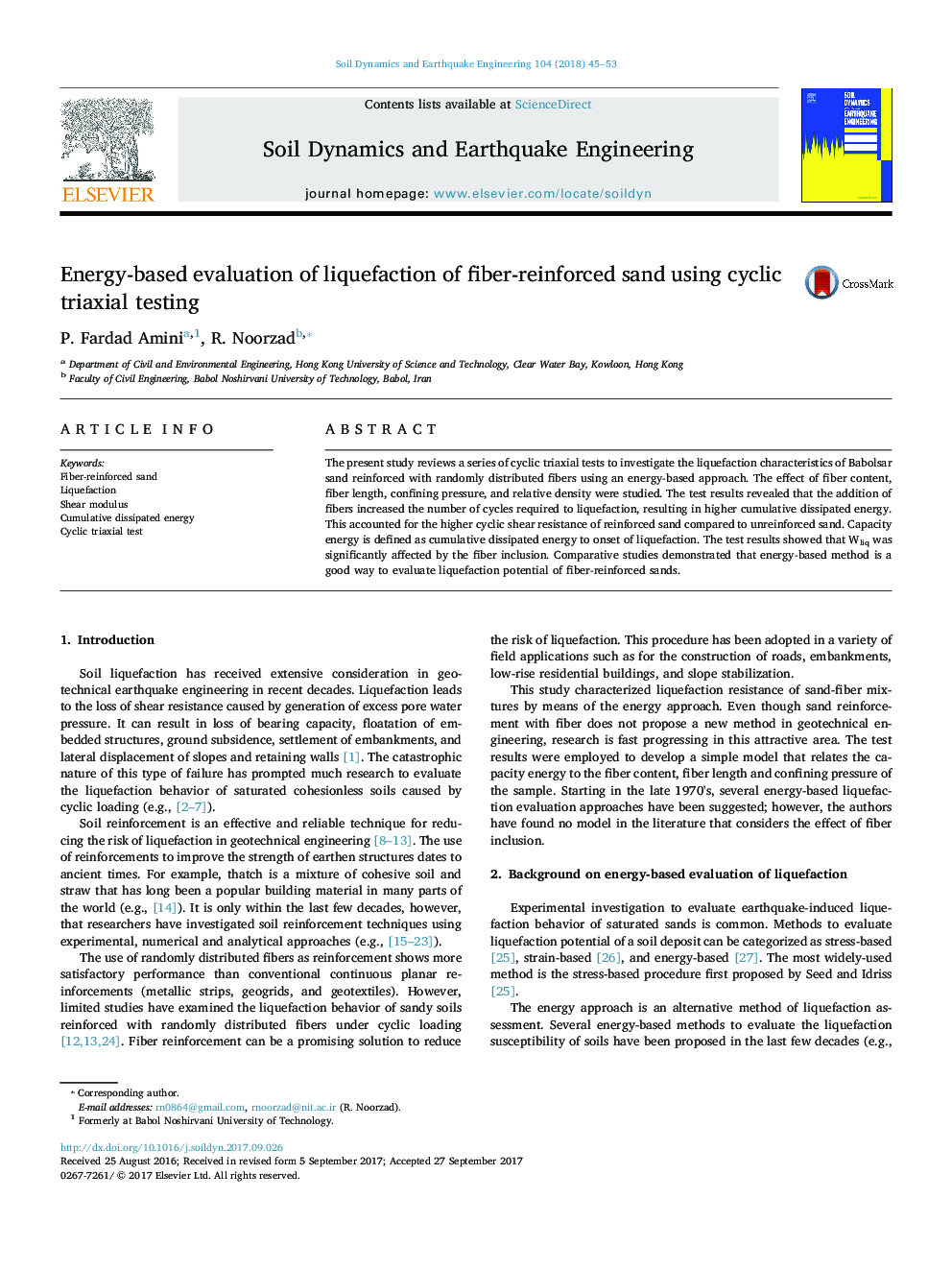| Article ID | Journal | Published Year | Pages | File Type |
|---|---|---|---|---|
| 6771196 | Soil Dynamics and Earthquake Engineering | 2018 | 9 Pages |
Abstract
The present study reviews a series of cyclic triaxial tests to investigate the liquefaction characteristics of Babolsar sand reinforced with randomly distributed fibers using an energy-based approach. The effect of fiber content, fiber length, confining pressure, and relative density were studied. The test results revealed that the addition of fibers increased the number of cycles required to liquefaction, resulting in higher cumulative dissipated energy. This accounted for the higher cyclic shear resistance of reinforced sand compared to unreinforced sand. Capacity energy is defined as cumulative dissipated energy to onset of liquefaction. The test results showed that Wliq was significantly affected by the fiber inclusion. Comparative studies demonstrated that energy-based method is a good way to evaluate liquefaction potential of fiber-reinforced sands.
Related Topics
Physical Sciences and Engineering
Earth and Planetary Sciences
Geotechnical Engineering and Engineering Geology
Authors
P. Fardad Amini, R. Noorzad,
